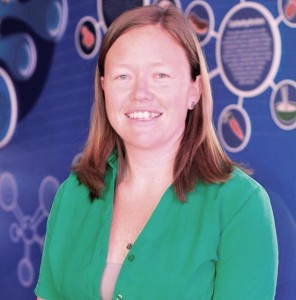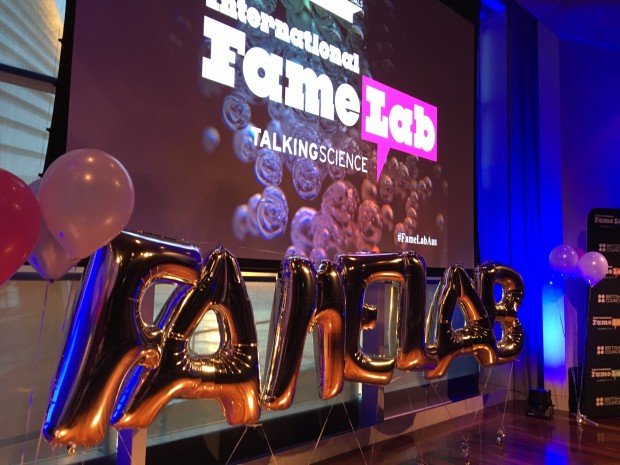WA’s Inspiring Australia officer shares what inspires her, advice for science communicators and why she sent a scientist travelling the State in a white campervan with 18 replica skulls.

Inspirer of Western Australians, Kerry Mazzotti
A love of meeting people from different backgrounds and a bug for travel are surely essential requirements for Kerry Mazzotti’s challenge of coordinating science engagement across the biggest state in Australia.
Kerry is one of eight state and territory Inspiring Australia Officers who support science communication and engagement projects, help them gain publicity and enable local collaboration.
What is your background?
I did my undergraduate degree in Environmental Science. I realised pretty quickly that I was more interested in talking about research than conducting it so went on to be a Science Circus Scholar in the Questacon Science Circus. After completing a Graduate Diploma in Science Communication as part of that course, I stayed on with the Questacon Outreach team for another couple of years presenting their careers program to high school students right across the country, from Nhulunbuy to Nannup and Rockhampton to Renmark.
With a full blown case of the travel bug, I set off for North America and landed a position in the Community Engagement team at Science World in Vancouver, once again travelling to regional areas across the province to enthuse people about science, this time with the Scientists in Schools program.
With a few detours and pit-stops along the way, I am now based at Scitech in Perth, still focussed on community science engagement including National Science Week and the Inspiring Australia Initiative.
What was your first job?
Check-out chick at Franklins.
What inspires you?
I am continually inspired by nature, and the scientists that study it. Nature was the reason I got into science in the first place, and I believe this is the gateway for many people. Science is about asking how the world works, and before you start asking the bigger questions, you start by asking questions inspired by nature like ‘Why does it smell nice after it rains?’ ‘Why are the sky and ocean blue?’ ‘Why do all of these animals only come out at night?’ And suddenly, before you know, you are a science enthusiast.
What Inspiring Australia initiatives are happening in your area?
In WA, Inspiring Australia supports Regional Community Science Engagement Groups in 6 regional hubs across the state, including Broome, Geraldton, Bunbury, Albany, Esperance and Kalgoorlie, with key individuals and organisations being supported in Karratha.
In this way, a year round calendar of science engagement events, relevant to local communities, is being developed. Examples include the Esperance Science Engagement Group recently running an event based on the science of brewing beer in a local cafe, and a presentation by an archaeologist at Karratha Public Library. These events are put on by the community and for the community, making them popular and relevant. For more examples of past events see www.snwa.net.au/-events.html.
Is there a success story or two that stand out?
Inspiring Australia in WA supported facial anthropologist Dr Susan Hayes to travel the state and share her passion for forensics and anthropology.
Dr Hayes loaded up 18 replica skulls into her white campervan and headed north. While on the road she gave free public talks in libraries, community centres, schools and caravan parks, based on both the forensic and anthropological sides of her work.
She also ran drawing and clay modelling workshops inviting participants into the world of facial approximation.
As well as encouraging our regional science engagement groups to run their own events on the ground, it’s great to be able to link them up with travelling experts such as Dr Susan Hayes. It provides the groups with an extra resource, and also provides the expert with networks in the regional centres. We have also done a similar thing with innovation guru, Dr Ed Sobey, and Whale Shark conservation and education group ECOCEAN.
This one really stands out because Dr Hayes is an inspirational scientist and researcher but also passionate about sharing her science with others. Luckily for us, she is also a keen traveller!
What are the science strengths of your state or territory?
WA is strong across many fields. One example includes astronomy, with our involvement in the Square Kilometre Array, a mega science project aiming to build the world’s largest and most sensitive radio telescope.
Tell us about your favourite science-related TV show or movie
Does Breaking Bad count?
What are you currently reading?
I just finished a novel called Feed, by M.T. Anderson describing a future where we all have implants to connect us to a Facebook like program that connects us, through status updates and advertising, to the world around us. I love science fiction when it looks at the social implications of advances in technology.
What is the best thing about your job?
The best thing about my job is getting to interact with people from a broad cross section of the community with one thing in common, an interest in science. Whether it be a keen librarian interested in astronomy, an enthusiastic school teacher fascinated by physics or an eager community volunteer who is a budding botanist, my favourite thing is to help them share their passion with others. Curiosity is contagious!
If you could give science communicators one piece of advice, what would it be?
Talk to the people around you. While science communication is a relatively new field, there are still so many resources and so much experience out there for you to tap into. That way you can expend your energy on new and creative ways to engage people in science, rather than re-inventing the wheel.
Read more Questions and Answers with Kerry at the Inspiring Australia website.






